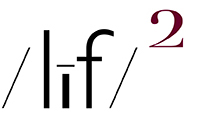(embiggenable) • iPhone
IN YESTERDAY'S ENTRY GARET MUNGER wrote:
"I would, if I may, disagree with your conclusion and your encouragement to "get on with the act of seeing what you want to see". It may be a fine point but I would be concerned if you go about looking for what you want to see, there is a risk that you will miss an awful lot of what there is to see and react to. One manner of reacting is using a camera to make a selection from all the possibilities in front of you, of just part to make into a picture.
Peter Turnley writes and is quoted in today's (January 1, 2020) TOP blog: "In the midst of all of this—among the daily blessings and joys that offer so much amazing life in the present moment—is the opportunity to go out, and use one's eyes, heart, movement, and presence to not only see, but to feel, and respond by registering with a camera, our very personal now."
my response: First, let me write a grateful thanks to Garet for the comment. Makes me feel like someone's reading this blog. And, as a general rule, my postion on that is the more comments the merrier.
AN ASIDE Garet wrote, "I would, if I may, disagree..." NOTE TO ALL: no permission needed to disagree with my thoughts and opinions. The only requirement is to disagree with civility. Ad hominen comments will be deleted. END OF ASIDE
I agree with Garet, re: about going out and about, when making pictures, with eyes and mind wide open simply because there is so much to see. However, in yesterday's entry I was writing about looking at pictures. That written, when I am looking at pictures, I do so with the same open eyes and mind. We are in complete agreement in either case.
So, perhaps I should have been more definitive, re: my get on with the act of seeing what you want to see statement. I could have been more defintive if I had just wrote, get on with the act of seeing END OF SENTENCE.
Or, in other words, just look at any given picture-I was writing about viewing, not making, pictures-with an open mind and listen to what your gut feeling tells you .... or as I am forever writing / saying, see if a given picture pricks your eye and sensitivities. However, therein is a "problem".
Photographs are a visual art form. A photograph is meant to be seen, aka: a visual experience. And, like all art (at least iMo), good art is meant to be affective-dictionary definition: to touch the feelings of (someone); move emotionally*.
Hence, the problem .... even with a so-called "open mind", not everyone is affected in the same manner when confronted with the same stimulus. They draw / experience their own conclusions. Inasmuch as most art afficionados are drawn to art which stimulates their own personal "tastes"-in my words, that which pricks their own very personal eye and sensibilities-they do, in fact (consciously or sub-consciously), see what they want to see.
ANOTHER ASIDE Perhaps the word "want" is the wrong word. Maybe the words "compelled" or "driven" might be better. As in, what they are compelled / driven to see by their inner voice, aka: vision.END OF ASIDE
That written, it should not be understood to mean that an art afficionado does not seek out new and/or unexpected pleasures. In fact, he/she does. In a very real sense, he/she is always looking for the next big thing. Or, at the very least, the next big thing for him/her-self even if it only pricks his/her eye and sensibilities.
Dn't know if this entry clarifies are muddies my previous entry. Feel free to let me know either way.
*can good art affect the intellect as well as the emotions? My only answer to that question is to suggest that you read Susan Sontag's essay, Against Interpretion and decide for yourself. You might also keep in mind the words of Oscar Wilde:
"The mystery of the world is the visible, not the invisible."
Which I read to mean that, when viewing a picture, the mystery is the visible, aka: the picture itself and how it makes you feel, and not the invisible, aka: the interpretation thereof and what it makes you think the picture is about.
